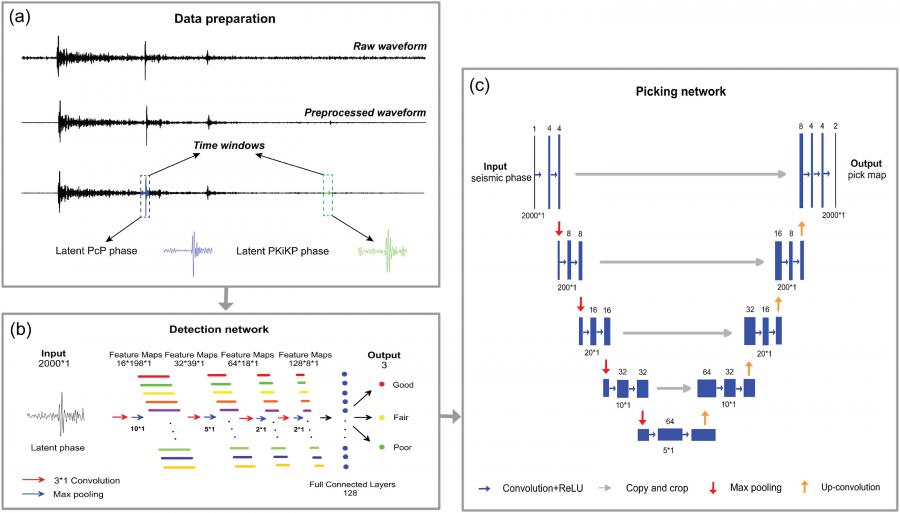
Elucidating Earth’s Interior Through Advanced Teleseismic Phase Picking
GA, UNITED STATES, April 21, 2025 /EINPresswire.com/ -- A deep learning-based scheme is proposed for automated and efficient processing of teleseismic phases.
1. The validation with two teleseismic phases, PcP and PKiKP, demonstrate high detection accuracies and low picking errors.
2. Deep-learning picking of first peaks is more accurate than picking first breaks of teleseismic phases.
3. This proposed scheme would enhance mining of teleseismic phases and probing of Earth's interior structures and their dynamics.
How do scientists explore Earth's hidden interior — its crust, mantle, and core? The answer lies in earthquake waves. Like X-rays, these seismic waves travel through and reflect off internal structures, allowing scientists to visualize the planet's interior. By analyzing these waveforms, seismologists can create "B-scans" of structure or "CT scans" of physical properties.
Identifying these reflections in seismic data, however, is complex and time-consuming. Reflected phases can be distorted by structural discontinuities and local heterogeneities, making it easy to mistake noise for real signals. This challenge underscores the need for efficient and accurate automatic phase pickers to handle the vast volume of teleseismic earthquake data, whose phases often reflect off deep structures within the Earth.
A recent study published in KeAi's Artificial Intelligence in Geosciences (KeAi) introduces a new deep learning-based workflow to automatically detect and pick teleseismic phases with high efficiency and accuracy.
"To improve the workflow's performance, we divide it into three parts: phase preparation, detection, and picking," explains leadingco-author Dr. Congcong Yuan, a postdoctoral researcher at Cornell University. "We apply physical constraints during preparation to highlight potential signals. The detection step filters out low-quality data, so that the final picking step can determine arrival times more accurately and without bias."
"This approach allows fast, reliable and robust teleseismic phase processing. "It enables us to extract more meaningful data, helping us better understand the physics and dynamics deep inside the Earth," adds Yuan.
"Yuan and colleagues are collaborating with another research team in teleseismic imaging to apply this method to specific tectonic regions. "The more high-quality phase data we have, the more we can uncover about Earth's inner workings," he says.
"For decades, seismologists have faced the tedious task of processing seismic data," notes co-author Prof. Jie Zhang from the University of Science and Technology of China. "With the rise of deep learning, seismology is reaching a turning point from semi-automatic workflows to truly autonomous systems."
References
DOI
10.1016/j.aiig.2025.100108
Original Source URL
https://doi.org/10.1016/j.aiig.2025.100108
Lucy Wang
BioDesign Research
email us here
Distribution channels: Science, Technology
Legal Disclaimer:
EIN Presswire provides this news content "as is" without warranty of any kind. We do not accept any responsibility or liability for the accuracy, content, images, videos, licenses, completeness, legality, or reliability of the information contained in this article. If you have any complaints or copyright issues related to this article, kindly contact the author above.
Submit your press release
